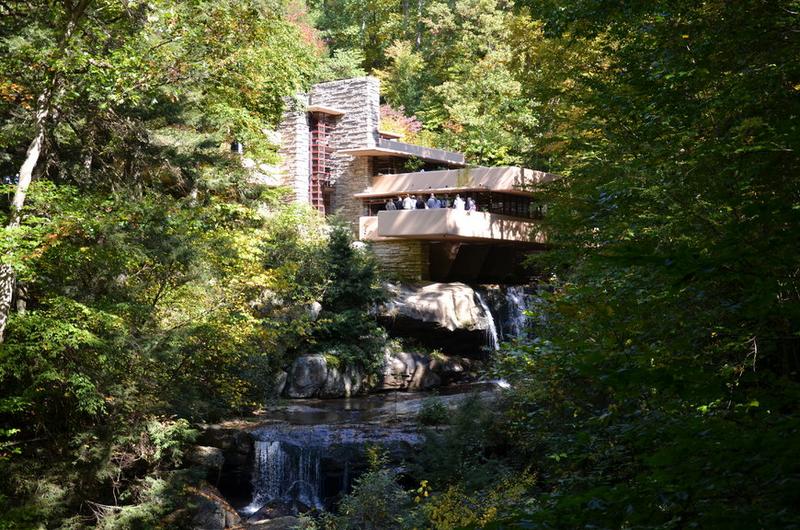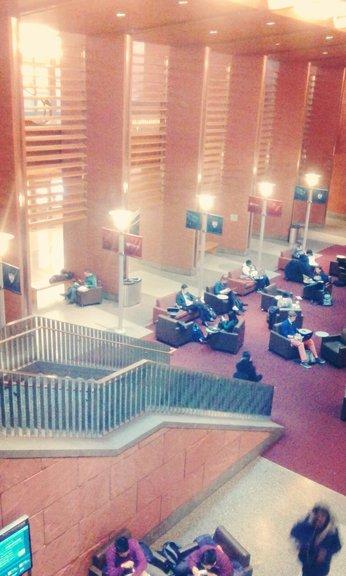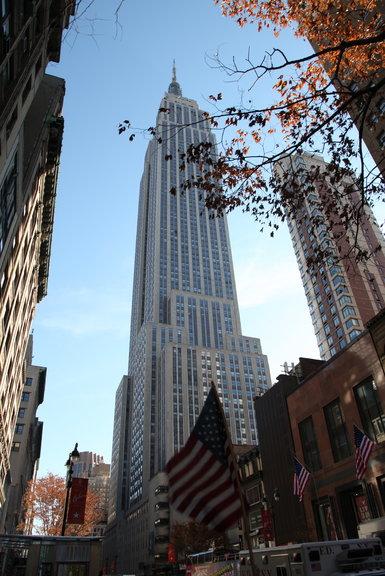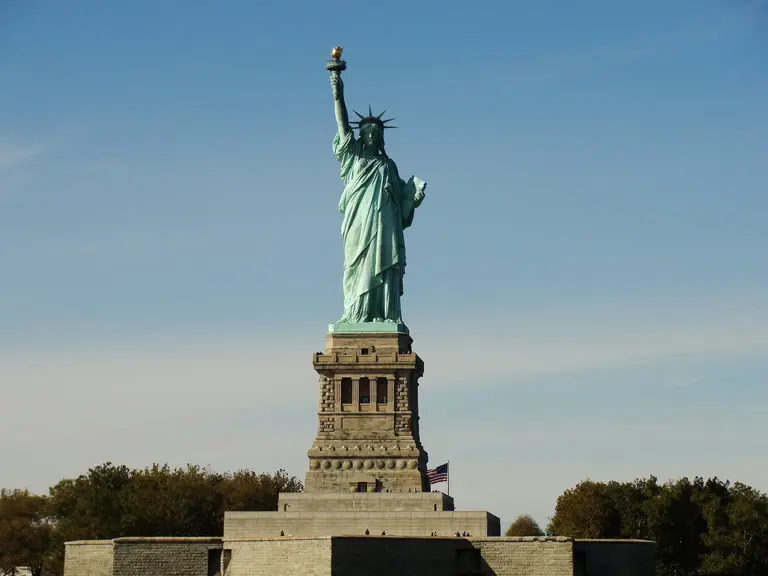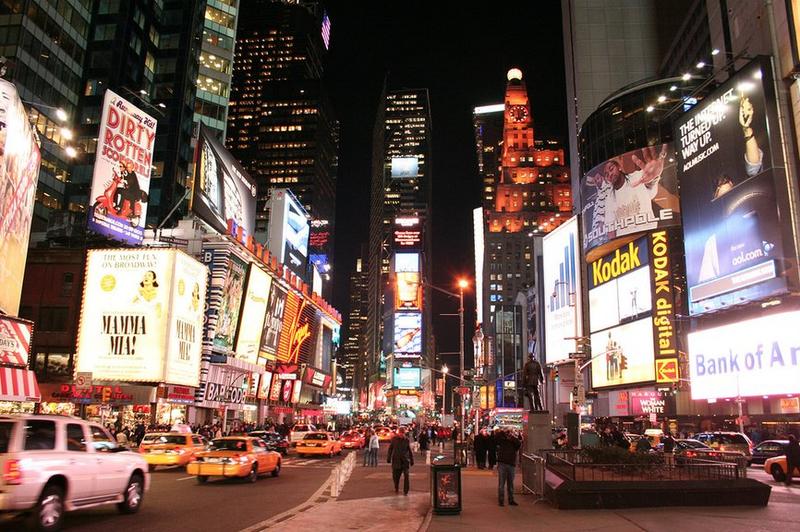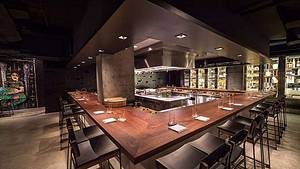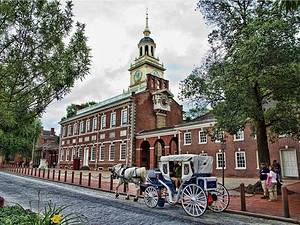New York - Grand Falls Classic East Coast 8-day tour
8 cities |
21 attraction(s) |
total distance 179
km
 TIPS
TIPS
Day1
Day2
Day3
Day4
Day5
Day6
Day7
Day8
Day1: Ithaca > Ulysses > Niagara Falls
3 attraction(s) ·
87 km
1
Cornell University is one of the Ivy League schools in the United States. Some departments of the school are private, while others are public. The school is located in Ithaca, New York, about a four-hour drive from New York City.
20
km
3
The world-famous Corning Museum of Glass, with a long history and perfected craft and technological expertise. The transformation of hot glass into exquisite works of art by skilled artisans is truly awe-inspiring. Don't forget to choose a favorite piece as a memento.
Day3: Niagara Falls
1 attraction(s) ·
0 km
1
Niagara Falls is the world's largest transnational waterfall, located on the Niagara River in Ontario, Canada and New York State, USA. It is one of the most famous natural wonders in North America. It has an average flow rate of about 5,720 cubic meters per second and is known as one of the world's three major transnational waterfalls along with Iguazu Falls and Victoria Falls. Niagara Falls has long attracted people to visit for honeymoons, tightrope walking across the falls, or taking barrel rides down the falls.
Day4: Pittsburgh
1 attraction(s) ·
0 km
1
Fallingwater, also known as the Edgar J. Kaufmann Sr. Residence, is a private residence located 50 miles southeast of Pittsburgh in southwestern Pennsylvania. It was designed by American architect Frank Lloyd Wright in 1934. The house is built over a waterfall on Bear Run Creek in Fayette County, atop Laurel Highlands of the Allegheny Mountains. Fallingwater was hailed as "Wright's most beautiful work" by Time magazine soon after its completion and is listed among the "must-visit" places in Smithsonian magazine. In 1963, the house was donated to the Western Pennsylvania Conservancy by Edgar Kaufmann Jr. and opened as a museum to the public in 1964. Fallingwater was designated as a National Historic Landmark in 1996 and was named "the greatest work of American architecture of all time" by the American Institute of Architects in 1991. It also ranks 29th on the American Institute of Architects' list of America's Favorite Architecture in 2007.
Day5: Washington D.C.
3 attraction(s) ·
5 km
1
The Lincoln Memorial, located at the western end of the National Mall in Washington, D.C., is a classical building modeled after the ancient Greek Parthenon. It was established to commemorate President Abraham Lincoln. The memorial is 118 feet long from east to west, 188 feet wide from north to south, and 80 feet high. It is supported by 36 plain white marble columns. At the center of the memorial is a 19-foot-tall seated statue of Lincoln. The left wall of the statue is inscribed with Lincoln's second inaugural address as President, and the stone wall behind it bears the inscription: "In this temple, as in the hearts of the people, for whom he saved the Union, the memory of Abraham Lincoln is enshrined."
2
km
2
The White House is the residence of the President of the United States. It is located at 1600 Pennsylvania Avenue NW in Washington, D.C., just north of the Washington Monument. The White House is divided into the main building and the east and west wings. The main building houses the library, map room, and display rooms for gold, silver, and porcelain collections, as well as various gifts from other countries. The west wing is the administrative area, which includes the Oval Office where the president works. Outside the building, there is the Rose Garden and the South Lawn.
3
km
3
Chinatown in Washington D.C. is a small historic neighborhood located on the east side of downtown. It is known for its abundance of Asian restaurants, particularly Chinese restaurants. During the Spring Festival, there are celebrations which include performances and parades, making it very lively.
Day6: Philadelphia
3 attraction(s) ·
12 km
1
The Philadelphia Museum of Art is one of the largest art museums in the United States, located at the western end of Benjamin Franklin Parkway in Philadelphia. It was established in 1876 to coincide with the first World's Fair held in the United States that year, making it of great significance to commemorate the centennial of the country. The museum was built and opened in 1876 and was later rebuilt at its current location in 1919. It adopts the architectural style of ancient Greek temples and is often referred to as the "Parthenon of America". The museum has a rich collection and is one of the three major museums in the United States. Its famous works include Picasso's "Three Musicians," Duchamp's "The Large Glass," Van Gogh's "Sunflowers," and Cézanne's "The Large Bathers." The first floor of the museum houses the galleries of American art and special exhibitions, while the north side of the second floor mainly exhibits Impressionist works and the south side showcases numerous works of medieval Europe and ancient Eastern art.
To reach the entrance of the museum, visitors must first climb the 72 steps known as the Rocky Steps, from where they can overlook the entire Benjamin Franklin Parkway and the City Hall at the end. Below the steps stands a statue of the protagonist of the movie "Rocky," played by Sylvester Stallone. "Rocky" is a representative work of the screen tough guy Stallone, and in the film, he stands on the steps with his fists raised above his head, displaying an indomitable determination, becoming an inspirational idol for a generation of men. So there are many visitors on the steps posing for photos in a boxing stance, seemingly seeking to gain his strength.
6
km
2
The University of Pennsylvania, founded by Franklin in 1740, is one of the nine colonial universities established before the American independence and one of the eight Ivy League schools. It is home to the first medical school and the Wharton School of Business, both of which are top-notch institutions. The computer science department showcases the first large-scale computer in the United States. The annual National Collegiate Athletic Association (NCAA) Track and Field Championship is also held here.
The motto of the University of Pennsylvania is "Laws without morals are useless," and its law school is also among the best in the United States. The design of the University of Pennsylvania combines the architectural styles of the University of Oxford and the University of Cambridge, incorporating some elements of Gothic architecture while innovating and developing a new campus Gothic architectural style. Renowned figures such as Chen Yinke, Jin Yuelin, Liang Sicheng, and Lin Huiyin have all studied here. There are many statues of Franklin on campus, which are as well-known as the statue at Harvard University and can be used as photo spots.
7
km
3
The area from 1st Street to 6th Street in Philadelphia has preserved some "historical sites" from the early days of the founding of the United States, such as the first bank in America, etc., presenting the early American history in its original form for visitors. Each 18th-century building in the Old City records a historical story, and even lesser-known houses could be small museums open to the public. Therefore, adventurous travelers don't have to stick to guides or guidebooks. If you see unique buildings in the Old City, especially those with explanations, feel free to explore and find out more.
Day7: New York
4 attraction(s) ·
50 km
1
Central Park is a very large urban park located between 59th Street and 110th Street. It has a zoo, playgrounds, theaters, artificial lakes, ice skating rinks, and other sports facilities, as well as spacious lawns for visitors to rest. Its 10-kilometer loop road is highly favored by joggers. In the land-scarce Manhattan, it is rare to have such a beautiful park that is open to the public for free.
5
km
2
The Empire State Building is a famous skyscraper located in New York City, USA. It has 102 floors and was designed by the architectural firm Shreeve, Lamb and Harmon. Construction began in 1930 and was completed in 1931 in just 410 days. It is named after the nickname of the state of New York, Empire State. On clear days, visitors can enjoy breathtaking views of New York from the observation decks on the 102nd and 86th floors.
14
km
3
The Statue of Liberty, officially known as the "Statue of Liberty Enlightening the World," was erected on October 28, 1886, on Liberty Island near the mouth of the Hudson River in New York Harbor. The statue, wearing a crown and holding a torch, has been a symbol of democracy and freedom for over a century, representing the ideals cherished by the American people. The statue is made of 120 tons of steel for its framework, 80 tons of copper plates for its outer skin, and has a total weight of 225 tons. Visitors can take a ferry to the base of the statue and then ride an elevator to the top of the pedestal, followed by climbing a spiral staircase with 171 steps to reach the crown. The Statue of Liberty's interior features a museum and stairs, allowing tourists to visit the statue's pedestal and, with advance reservations, climb to the crown for a panoramic view of Manhattan.
31
km
4
Times Square, also known as "Crossroads of the World," is a block in Manhattan, New York City, located at the intersection of West 42nd Street and Broadway. It is home to nearly 40 shopping centers and theaters, making it a bustling entertainment and shopping center. It is also the only area in New York City where owners are required by law to display prominent advertising billboards. Times Square is also the live broadcast location of "Good Morning, America."
Day8: New York
5 attraction(s) ·
28 km
1
The Metropolitan Museum of Art, also known as "The Met", is the largest art museum in the United States and one of the most famous museums in the world. The Met has a total exhibition area of 20 hectares, equivalent to the size of Beijing's Bird's Nest, with 8 hectares being the main building. Its art collection exceeds 3.3 million objects, covering fields such as painting, sculpture, architecture, decorative arts, calligraphy, and photography. It has a total of 19 different departments.
4
km
2
The Museum of Modern Art, also known as MoMA, is one of the most important modern art museums in the world. It houses a large collection of modern art masterpieces and was the first museum dedicated to collecting modern art. In addition to painting, its collection also includes films, photography, and industrial design works. Currently, it has approximately 150,000 artworks, 20,000 films, and 4 million film stills.
11
km
3
Translated into English:
Connecting Manhattan and Brooklyn, it is one of the oldest suspension bridges in the United States, built in 1883. It is a symbolic landmark of New York City. The bridge is 1,834 meters long, with its deck suspended 41 meters above the water by thousands of steel cables. It was the longest suspension bridge in the world at the time and the first major bridge constructed with steel. It is regarded as one of the seven architectural wonders of the industrial revolution. To commemorate the centennial of the bridge, the United States issued a 20 cent stamp featuring its grandeur and magnificence. The modern American poet Hart Crane even wrote a long poem dedicated to it, titled "The Bridge."
5
km
4
Ground Zero - refers to the site of the collapsed World Trade Center in the "9/11 terrorist attacks," which has now become a must-visit place for tourists. The site where the Twin Towers once stood proudly is now just an empty ground, with two rows of iron fences enclosing a pathway, with a large banner hanging behind the fences saying "We Will Never Forget." In front of the fences is "Ground Zero," where you can see the scenes of cranes, excavators, trucks, and construction workers clearing the rubble. The massive hollowed-out ruins are like a huge hole, immediately weighing heavily on people's hearts. On a wall of a small street south of the World Trade Center site, there is a group of bronze reliefs about twenty meters long, depicting the courageous New York firefighters in the 9/11 event. Some firefighters are directing, some are holding firefighting hoses, some are connecting water tanks, and some are clearing debris. In that firefighting battle, 343 firefighters sacrificed their precious lives, and this group of reliefs was specially built to commemorate them. There are two English sentences on the reliefs expressing people's remembrance, "DEDICATED TO THOSE WHO FELL AND TO THOSE WHO CARRY ON," and "MAY WE NEVER FORGET." On one side of the reliefs are photos of these 343 firefighters for people to pay their respects, while several bouquets of flowers are quietly placed against the wall.
10
km
5
The avenue that runs through Manhattan, starting from Washington Square Park and going north to 143rd Street, is lined with numerous shops.





